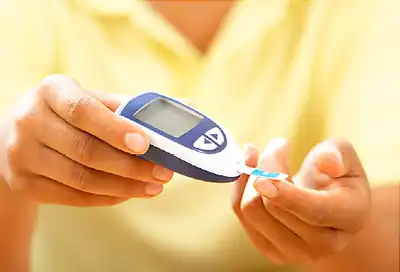Diabetes is a life-long disease in which the body cannot produce insulin or cannot use the insulin it produces. Insulin is the key hormone involved in the storage and controlled release of glucose in the blood. Glucose, a sugar, is transported into the muscles and fat cells with the help of insulin for use as energy. Without insulin, glucose remains in the blood which over time can cause serious health problems such as heart disease, vision loss and kidney disease.

Diabetes affects about 400 million people worldwide today and about 50% of these people are undiagnosed. This number is expected to reach about 500 million people by 2040. It is the eighth leading cause of death worldwide and is usually irreversible. Although patients can lead a reasonably normal lifestyle, its late complications result in reduced life expectancy and major health costs.
There isn’t a cure yet for diabetes, but there are available therapeutic options that limit disease and reduce complications. These options include healthy lifestyle habits, taking medicine, self-management education, and keeping appointments with your healthcare team.
Insulin Dose
Types of Diabetes
There are three main types of diabetes: type 1, type 2, and gestational diabetes (diabetes while pregnant).
Type 1 diabetes
This is usually diagnosed in children, teens and young adults. If you have type 1 diabetes, you’ll need to take insulin every day to survive. The body’s immune system attacks and destroys the cells that produce insulin thereby stopping production. About five percent of the people who have diabetes have type 1. Currently, there are no documented ways to prevent this.
Type 2 diabetes
This is usually diagnosed in adults (though increasingly in children, teens, older people and a result of one’s lifestyle). It accounts for 90% of all cases of diabetes. The initial problem in Type 2 diabetes is the resistance to the action of insulin. Thereafter, your body is unable to produce enough insulin to keep blood sugar at normal levels. You may not notice any symptoms, so it is important to get your blood sugar tested if you’re at risk.
Gestational diabetes
This develops in pregnant women who have never had diabetes. During pregnancy, some women have such high levels of blood glucose that their body is unable to produce enough insulin to absorb it all. Gestational diabetes usually goes away after your baby is born but increases your risk for type 2 diabetes later in life. If you have gestational diabetes, your baby could be at higher risk for health complications.
Prediabetes
Another entity that is even equally sinister but less talked about regarding poor glucose control is prediabetes.
It is a serious health condition where blood sugar levels are higher than normal, but not high enough yet to be diagnosed as diabetes. Many people have pre-diabetes, and 90% of them don’t know they have it.
If your blood sugar level is above the normal range, your risk of developing full-blown diabetes is increased. It is very important for diabetes to be diagnosed as early as possible because it will get progressively worse if left untreated.

Diabetes affects about 400 million people worldwide today and about 50% of these people are undiagnosed. This number is expected to reach about 500 million people by 2040. It is the eighth leading cause of death worldwide and is usually irreversible. Although patients can lead a reasonably normal lifestyle, its late complications result in reduced life expectancy and major health costs.
There isn’t a cure yet for diabetes, but there are available therapeutic options that limit disease and reduce complications. These options include healthy lifestyle habits, taking medicine, self-management education, and keeping appointments with your healthcare team.
Insulin Dose
Types of Diabetes
There are three main types of diabetes: type 1, type 2, and gestational diabetes (diabetes while pregnant).
Type 1 diabetes
This is usually diagnosed in children, teens and young adults. If you have type 1 diabetes, you’ll need to take insulin every day to survive. The body’s immune system attacks and destroys the cells that produce insulin thereby stopping production. About five percent of the people who have diabetes have type 1. Currently, there are no documented ways to prevent this.
Type 2 diabetes
This is usually diagnosed in adults (though increasingly in children, teens, older people and a result of one’s lifestyle). It accounts for 90% of all cases of diabetes. The initial problem in Type 2 diabetes is the resistance to the action of insulin. Thereafter, your body is unable to produce enough insulin to keep blood sugar at normal levels. You may not notice any symptoms, so it is important to get your blood sugar tested if you’re at risk.
Gestational diabetes
This develops in pregnant women who have never had diabetes. During pregnancy, some women have such high levels of blood glucose that their body is unable to produce enough insulin to absorb it all. Gestational diabetes usually goes away after your baby is born but increases your risk for type 2 diabetes later in life. If you have gestational diabetes, your baby could be at higher risk for health complications.
Prediabetes
Another entity that is even equally sinister but less talked about regarding poor glucose control is prediabetes.
It is a serious health condition where blood sugar levels are higher than normal, but not high enough yet to be diagnosed as diabetes. Many people have pre-diabetes, and 90% of them don’t know they have it.
If your blood sugar level is above the normal range, your risk of developing full-blown diabetes is increased. It is very important for diabetes to be diagnosed as early as possible because it will get progressively worse if left untreated.
No comments:
Post a Comment